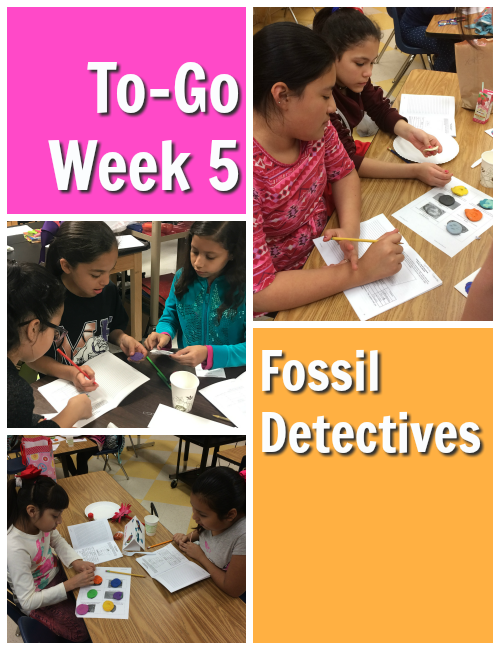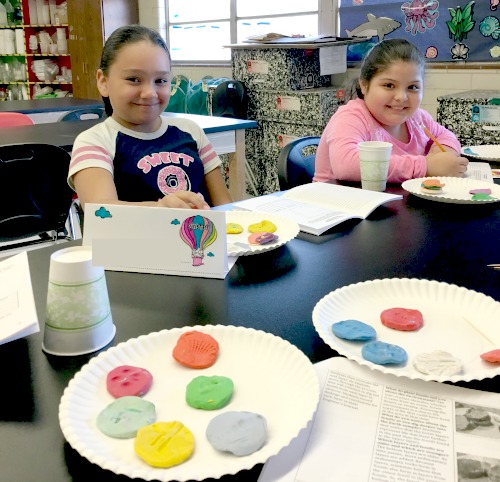Fossil Detectives
This week’s To-Go activity was inspired by the Paleontologist career, which relies on knowledge of excavation, sediments, fossilization, and the geologic time scale. Students excavated models, observed different types of fossils, and analyzed the history of a sediment cutout.

In small groups, students worked together to use toothpicks, craft sticks, and forks to uncover fossil “layers” made of clay. Students first examined the layers of clay in their cups and observed the different colors and textures. Groups strategized the best way to unearth the delicate fossils and utilized different tools depending on the type of sediment layer. As they dug deeper into their cups, girls found fossils from older and more ancient times. Groups with plant fossils analyzed their models and formed hypotheses about the organisms’ environment: ocean, forest, desert, or swamp.

After separating all of the fossils in their cups, students organized them based on fossil type: trace, mold, cast, or petrified. Each group presented their excavated fossils, their hypotheses about the fossil environments, and the types of sediments found in their cups.

